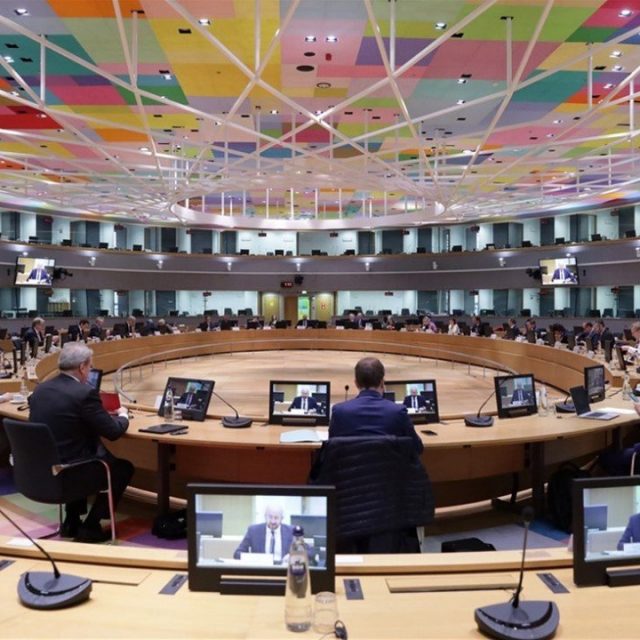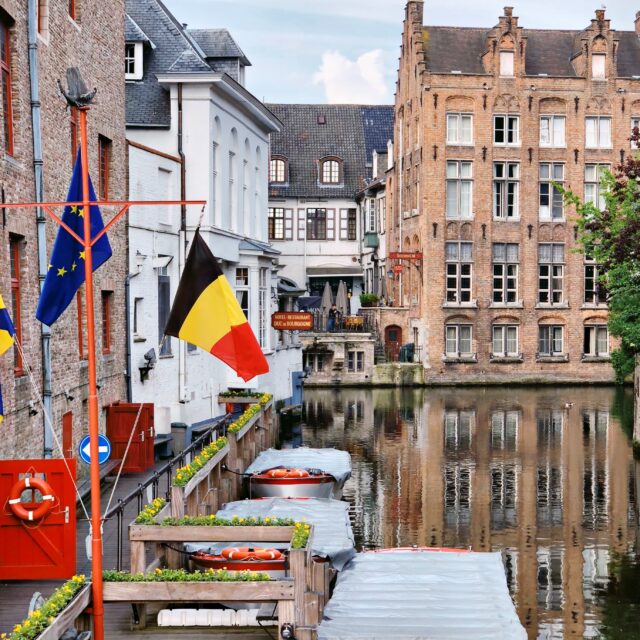In the year of its 60th anniversary, the EU bank supported EUR 230 billion of investment, meeting its Juncker Plan targets ahead of schedule and successfully navigating a politically difficult environment.
Shifting its focus from Europe’s economic recovery to competitiveness, the European Investment Bank (EIB) Group zoomed in on market gaps identified by its experts, so that its investments would have the biggest impact on Europe’s economy.
“Digitalisation, SMEs, education and skills, sustainable energy and the modernisation of infrastructure are crucial for the European economy to keep pace with global competition,” EIB President Werner Hoyer said at the EIB Group’s annual press conference on Tuesday in Brussels.
Thanks to increased efficiency in crowding in private capital, the amount of total investment supported was close to the level achieved in 2017, balancing a reduction in the EIB Group’s overall financing volume to EUR 64.19 billion in 2018.
The number of signed projects reached 854. The EIB’s subsidiary, the European Investment Fund (EIF), even reported a record financing volume of EUR 10.06 billion, benefiting tech pioneers and small and medium-sized companies all over Europe.
“The EU bank represents the ability of Europe to deliver at a time when too many across the continent seek shelter in parochial nationalism. The Bank’s investment brings Europeans closer, and that is the basis on which future jobs and growth will be built for all EU Member States,” Hoyer said.
For 2019, the EIB Board has approved a corporate operational plan with an orientation of slightly above EUR 70 billion of financing by the EIB Group. This would represent an increase of around 10% compared to last year.
The best example of the successful crowding-in of private capital is the European Fund for Strategic Investments (EFSI), managed by the EIB Group as part of the Juncker Plan. Based on an original guarantee of EUR 21 billion by the European Commission and the EIB, the objective was to mobilise EUR 315 billion of investment by mid-2018. In fact, EFSI surpassed this goal. It has mobilised investment of more than EUR 375 billion so far and is now heading for a new target of EUR 500 billion by 2020, supported by additional guarantees.
Negotiations with the European Commission on the continuation of this successful model under the post-2020 EU Multiannual Financial Framework are advancing well.
“No matter how good our performance with EFSI by 2020, the principles and roles that enabled its success must be maintained beyond that date,” Hoyer said.
Climate action is another area in which the EIB Group is instrumental in delivering on EU policy goals. The EIB remains the world’s largest multilateral financier of climate action projects. In 2018, the EU bank increased the proportion of its lending that goes towards combating climate change to close to 30%. The EIB has also just started an energy lending review to adapt its policy to a changing environment. A three-month public consultation with industry, civil society groups and policymakers is underway.
The EIB Group covers the full spectrum of financing for innovative companies in the EU. It is the biggest provider of risk capital for start-ups through investments in venture capital funds, it offers equity and venture debt for growing companies that need to scale up, and it finances research and development programmes that allow medium-sized and bigger companies to remain competitive on global markets. Despite the dip in overall lending, the EU bank invested almost as much in innovation as in the preceding year – EUR 13.52 billion.
374 000 SMEs benefited from EIB Group financing last year, intermediated through financial partners.
“The EU bank is focusing on increasing the competitiveness of European companies and infrastructure networks, but this does not mean it forgets to support regions that are still in the process of catching up. No one should be left behind,” President Hoyer explained. Nearly 32% of all EIB investment in Europe went into cohesion and convergence regions last year.
But it is not only investment that helps regions catch up. Sound financial and technical advice is just as important. The EU bank offers this on a large scale, using its unique expertise in banking as well as engineering. Last year, the EIB’s advisory services took up 530 new assignments. It supported operations with a total estimated investment cost of more than EUR 40 billion.
The EIB Group funds its activities on the global capital market. It borrowed EUR 60 billion from international investors in 2018, slightly more than the year before. The EIB remains an important bond issuer with an “AAA” rating, not only because of the volume of its issuance, but also because of its role as an innovator and standard-setter.
The EU bank was instrumental in creating the EUR 450 billion green bond market. It issued the first of these bonds eleven years ago and played a key role in setting the standards for this investment category. Last year, the EIB issued its first Sustainability Awareness Bond, raising EUR 500 million for investments to meet the UN’s Sustainable Development Goals. The proceeds from the first bond will mainly be invested in water projects. This year, the EIB plans to issue further bonds for investments towards meeting the Sustainable Development Goals, notably in the areas of healthcare and education.
Money raised on the capital markets is used by the EIB to improve the living conditions of people all over the world. Lending outside the EU rose to EUR 8.1 billion in 2018. A record sum of EUR 1.6 billion went to projects in sub-Saharan Africa. “We are ready to do more and support a shift in development policy from aid to investment and from a donor-recipient relationship to partnership,” Hoyer confirmed.
The EIB Group received an important signal of support from the EU Member States. When the United Kingdom leaves the EU, the EU bank will lose one of its biggest members. To make sure that this does not affect the EIB’s business in the EU-27, the remaining Member States have decided to fully replace the capital that would be lost when Brexit takes place. No capital injection will be needed because the capital will be replaced using EIB reserves. Additionally, some Member States have shown an interest in paying capital into the EIB to increase their shares. Along with the financial measures, a number of governance changes are planned. Details of this agreement are still being finalised.
The European Investment Bank (EIB) is the long-term lending institution of the European Union, owned by its Member States. It makes long-term finance available for sound investment in order to contribute towards EU policy goals.




